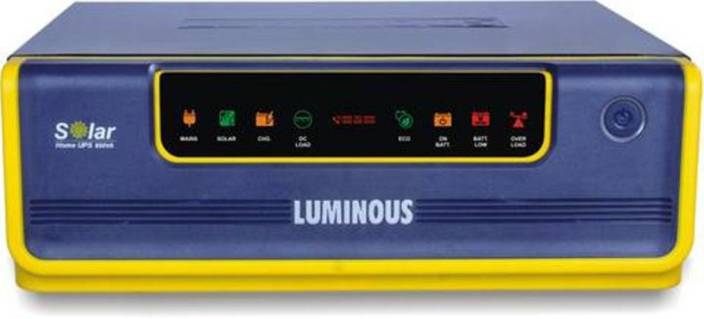The first year into my engineering college, I stayed in a flat which had frequent power cuts. I had to study long hours to cope with the never-ending syllabus, especially at night, the usual case with us, college students!
I needed the power to be available at all times. So I decided to buy an inverter!
I had no clue where to start, and where to look. I asked around for suggestions; most of my professors and friends suggested that the best inverter to buy was a pure sine wave inverter.
Page Contents
How is a pure sine inverter the best and were there others that I could choose from?
I decided to find answers to these questions! Here’s what I found out!
I learned that an inverter is used to convert DC (Direct Current) to AC (Alternating Current). These are majorly two forms of current. In the case of DC, current flows in one direction. And in AC, the current keeps reversing its direction. Also, it has a ‘wave’ shape.
Why is AC current required to do conversion at all?
AC is a basic form of electricity that we receive from the power stations, which we use in our homes to run appliances. Mostly, AC is preferred over DC because it’s easy for long-distance transmission.
How does DC current come into the picture?
There can be times when the electricity provided from the power stations is not available, and at those times we need a backup. We need a place where we can store this electricity, and use it later!
We store this electricity in batteries.
And these batteries provide us with power in times of need. Batteries produce DC current. And we need an inverter to convert this DC to AC so that we can continue to receive electricity at all times. Solar panels also produce DC.
So now we know what an inverter does.
It simply ‘converts DC to AC’. I was now eager to know how to choose the best inverter. I found out that Inverters can be broad of 3 types. Square wave inverters, Modified Sine wave Inverters and Pure Sine wave inverters.
The output AC that we receive from an inverter is in the form of waves that can take a Square shape, a modified sine shape or a pure sine curve.
I learned that old-fashioned inverters produced square waves.
In a square wave inverter, the incoming DC is simply flicked from positive to negative creating a square shape. These sudden and sharp pulses can be very harmful to our household appliances. They can cause overheating and create a loud ‘humming’ noise, overall they are least efficient.
Modified sine wave inverters were also somewhat similar. They imitated a square wave with slight variations.
Well! that just wouldn’t do. I didn’t want to settle by buying a low-quality inverter, and end up paying more; I wanted to buy an inverter that I just paid for once and then never again.
And so I went in for the best. I bought a pure sine wave inverter.
Here’s Why Pure Sine Wave Inverters Are The Best

1. A Pure sine wave inverter gives ‘clean power’
It’s smooth, sharp less, exactly like the pure AC that we receive from the power stations!
And since most appliances that we use at our homes are designed to function on pure AC power coming from power stations, it’s the perfect fit! We need not look any further!
2. Pure sine wave inverter consumes less power
Okay… get ready to understand exactly how pure sine wave inverters consume less power.
Blame the engineer’s mind but I can’t resist sharing this!
Square Wave inverters have higher THD (Total Harmonic Distortion). This very simply means higher distortions. Distortions are the unwanted part that we receive along with the pure signal, which does not contribute to useful work in fact they get wasted as heat energy.
So we are actually paying for power that we don’t even end up using.
Not fair!
Sine wave inverters are free of any kind of distortions. That’s why they are ‘pure’. No losses! This means they are highly efficient and help in reducing electricity bills!
Need I say more?
3. A pure sine wave inverter maintains voltage and current at safe levels
We know that we get 230V (volts) AC supply in our homes. In a square wave inverter, the voltage levels fluctuate (much higher or much lower than 230V) causing immense harm and reducing the life of our costly appliances!
In a pure sine wave inverter, voltage levels are maintained around 230V, which is just perfect. It prevents crashes and keeps our sensitive appliances absolutely safe!
4. Appliances running on pure sine wave inverters are practically noiseless
Higher distortions in square wave inverters also cause a ‘humming noise’ in running appliances. Because of fewer distortions in pure sine wave inverters like we just understood, appliances running on pure sine wave inverters are practically noiseless.
They stay cool and even last longer as compared to the ones running on square or modified sine wave inverters. Simply flawless.
So these were the 4 reasons why pure sine wave inverters are the best. I did my research and without giving another thought installed a pure sine wave inverter in my flat! Thanks to that and of course the long hours of slaving through the night.
Also Read: 3 Most Common Myths About Pure Sine Wave Inverters
I sailed comfortably through my 4-year-long journey in engineering without spending another penny. And by experience I learned, going in for the best is non-negotiable.
Got Queries? Ask with #SolarClap
